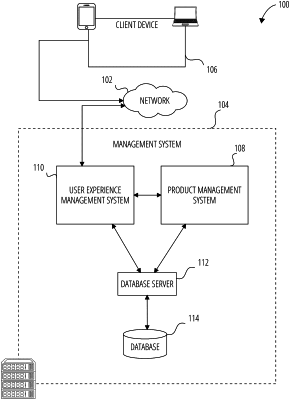| CPC G06Q 30/0203 (2013.01) [G06Q 30/0201 (2013.01)] | 20 Claims |

|
1. A method comprising:
receiving training data comprising a bag of words representation of text, a mapping of words to an identification of each word, and an estimated quantity of topics, the estimated quantity of topics being based on a predetermined topic probability and predetermined word probability;
training a machine learning model based on the training data to infer a topic distribution of a corpus comprising survey information and to estimate problems, the training of the machine learning model comprising:
comparing one or more trends observed between responses to surveys and contents of tickets and calls;
identifying problems based on the one or more trends; and
building the machine learning model based on the identified problems;
generating, by the machine learning model using a processor, a set of problems at a predetermined frequency based on free-form comments data in a databased of a computer, wherein data in the database comprises results of surveys, data on tickets and calls, and data on system monitoring;
generating, for display, an output of the machine learning model in response to generating the set of problems, the output comprising a plurality of geometric shapes each representing a different topic in a plurality of topics included in the output of the machine learning model, a first of the plurality of geometric shapes having a first size corresponding to a first quantity of words associated with a first topic, a second of the plurality of geometric shapes having a second size corresponding to a second quantity of words associated with a second topic;
selecting a subset of problems from the set of problems based on a priority matrix and criteria;
generating a message comprising a problem definition and a prioritization based on the subset of problems;
transmitting the message to a product management system;
analyzing a resolution generated by the product management system; and
monitoring the resolution, wherein monitoring the resolution includes performing system monitoring and storing data associated with the resolution in the database.
|